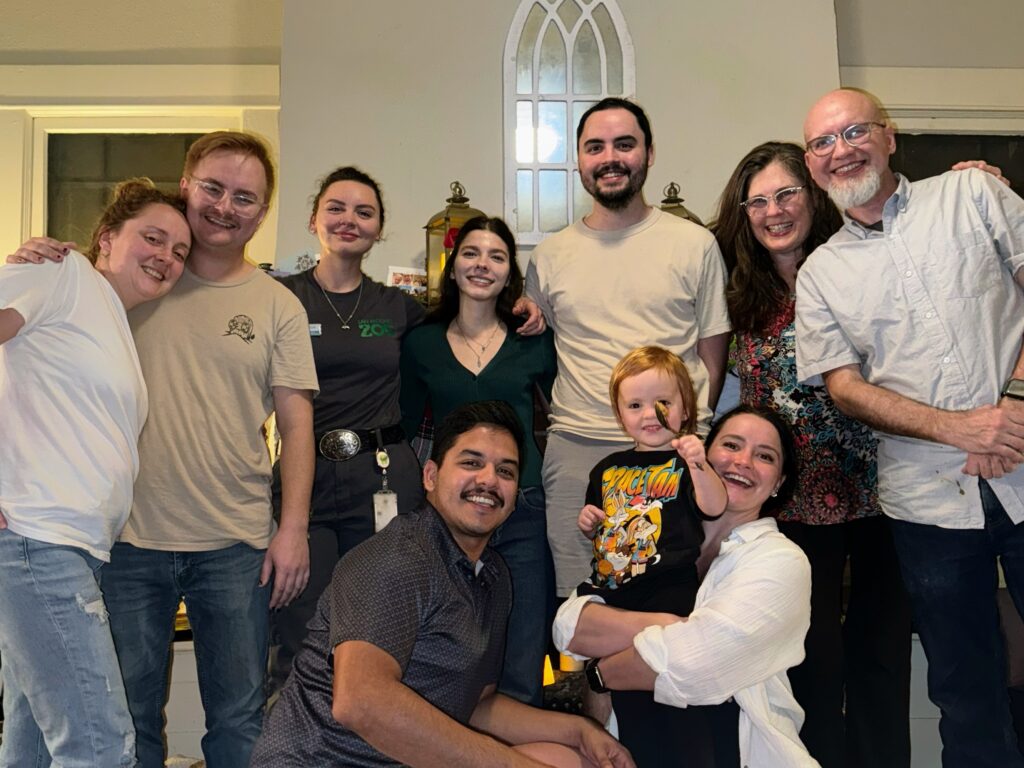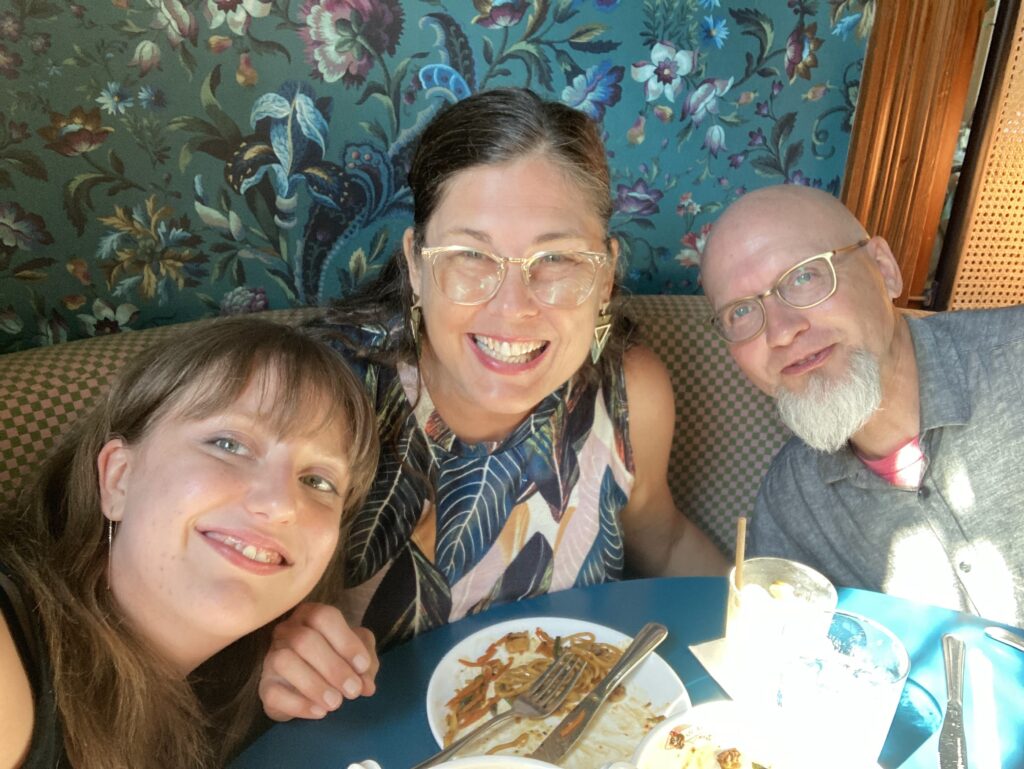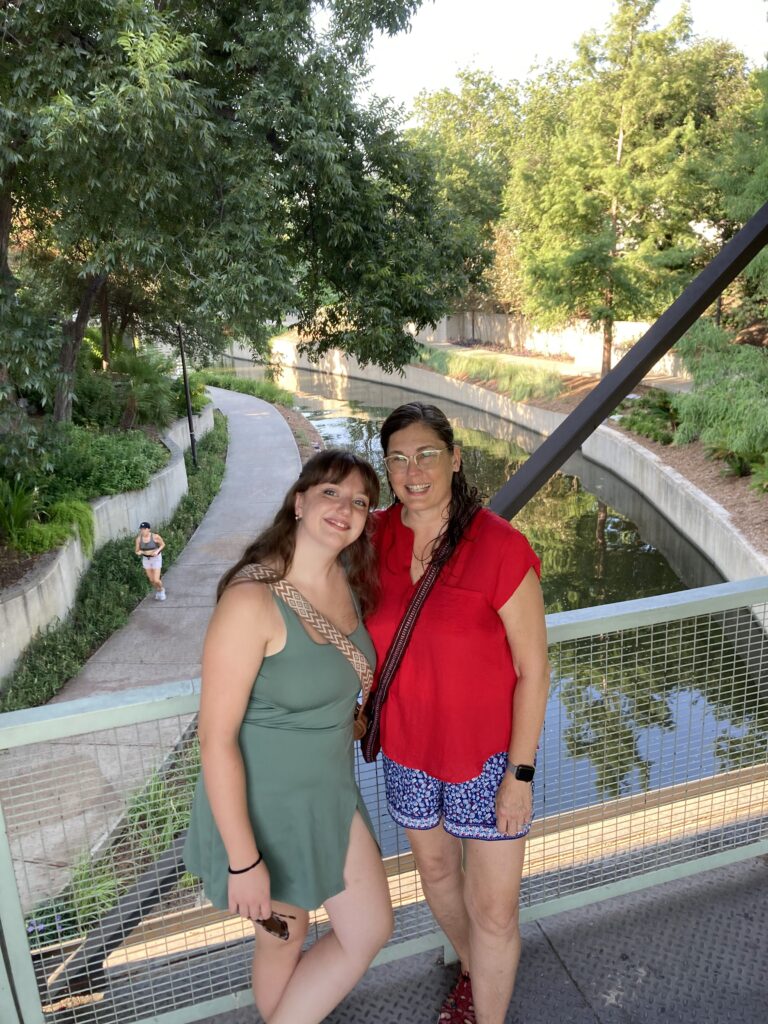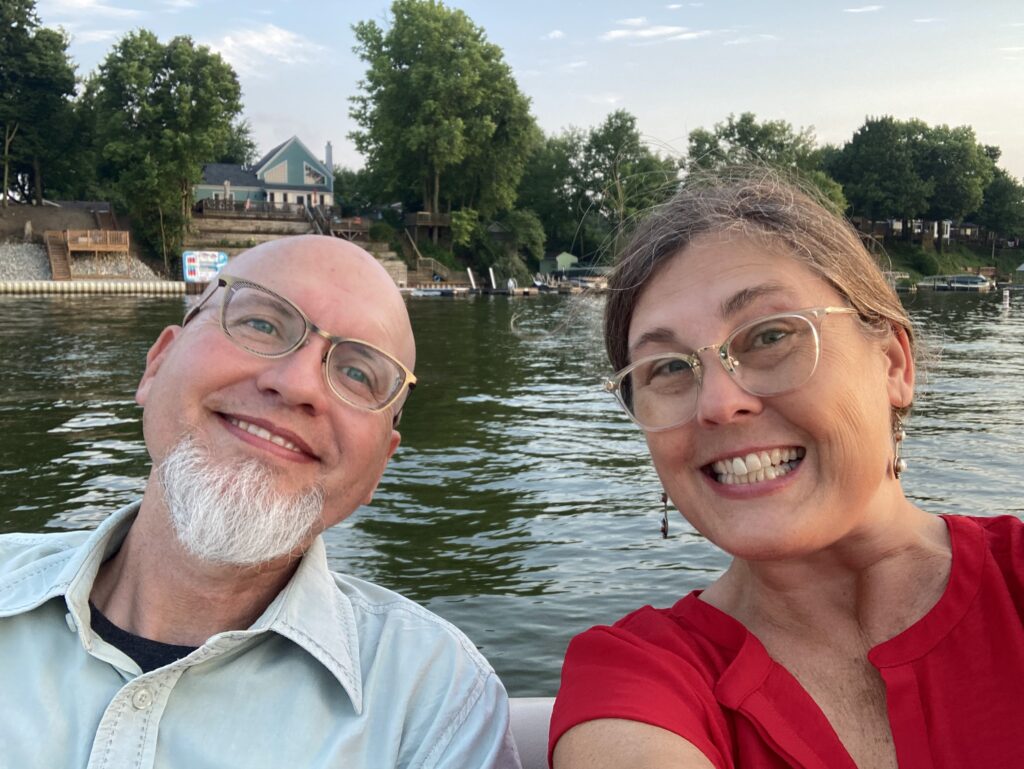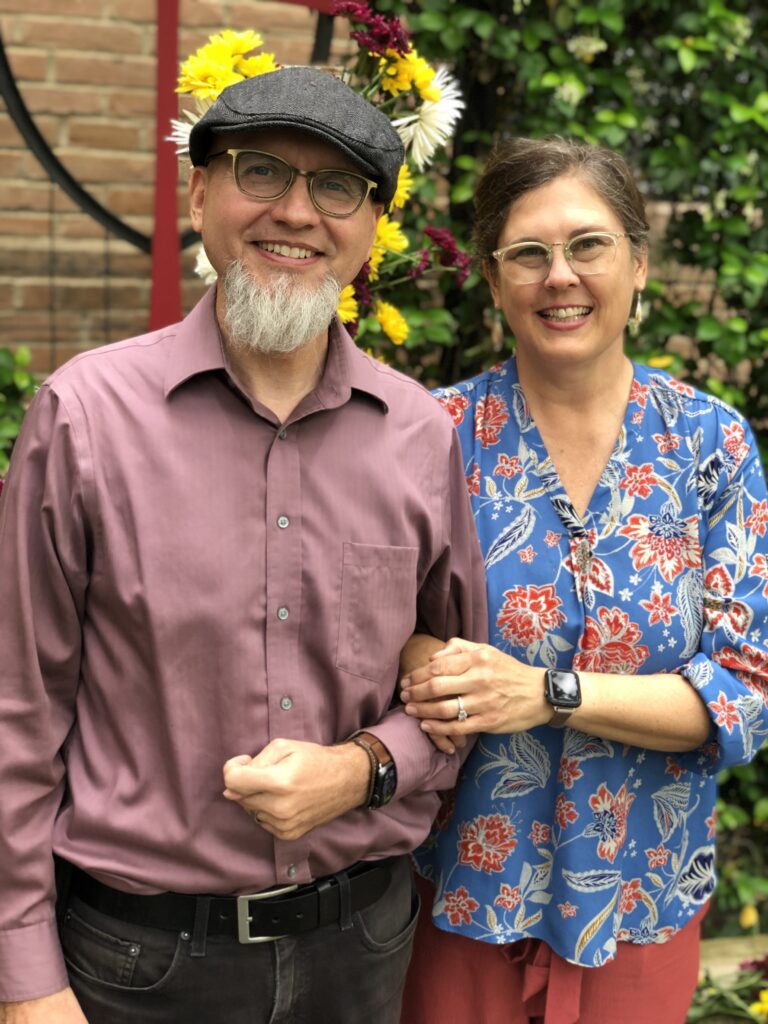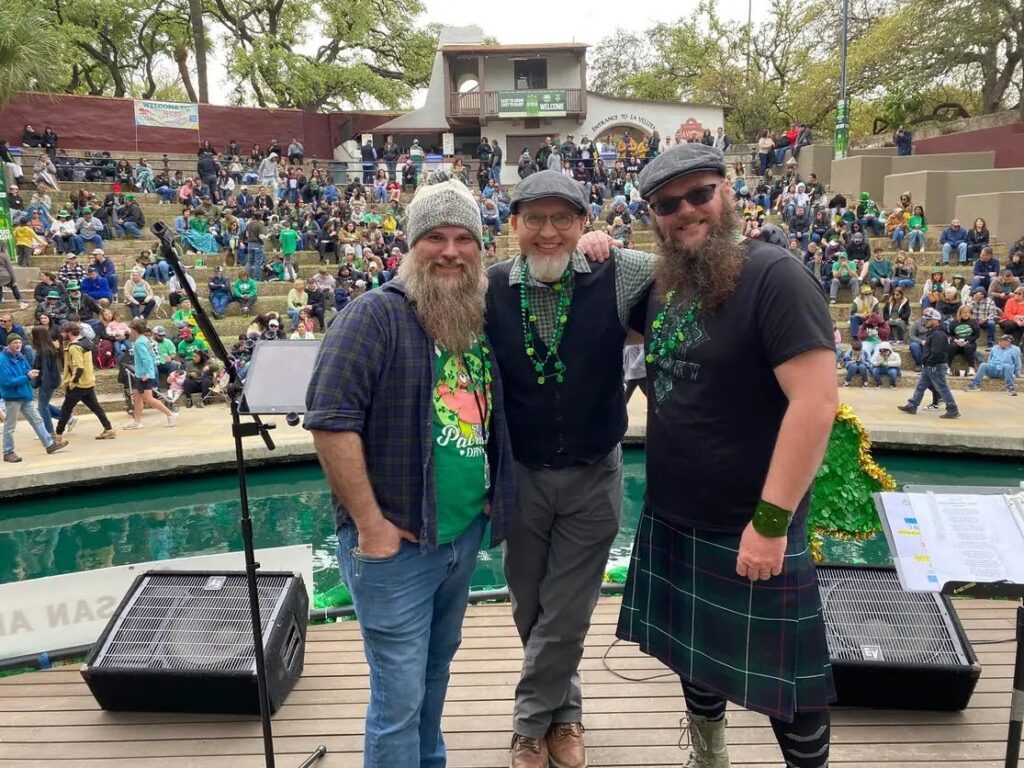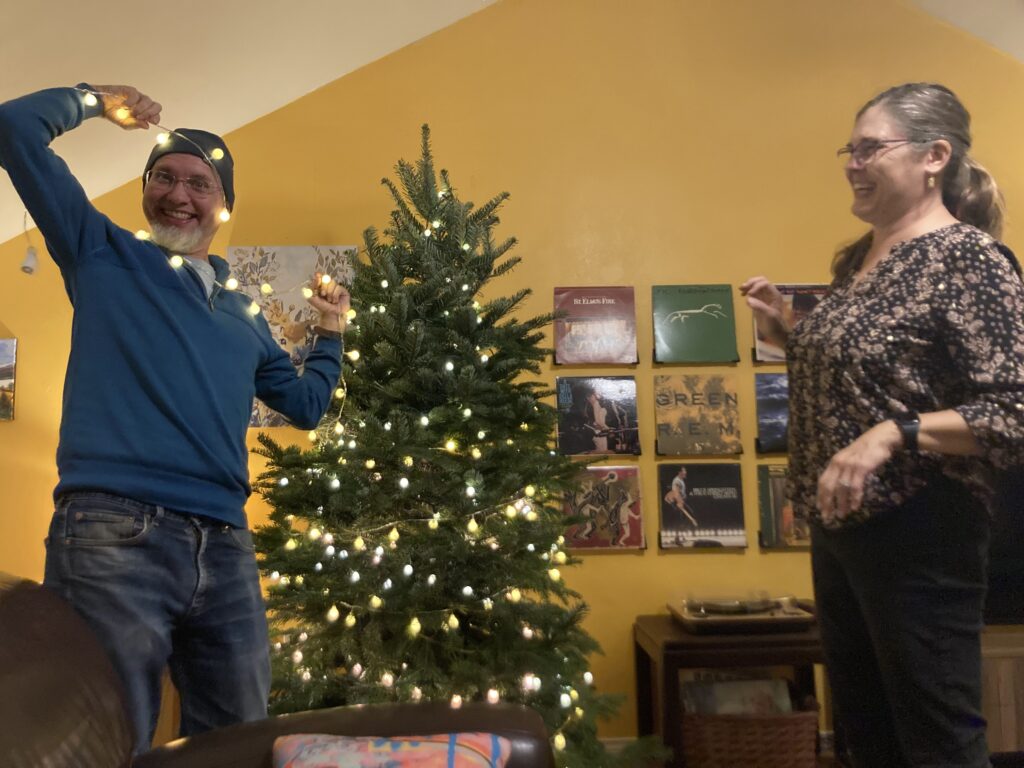Howdy friends, near and far, young and old, those who we haven’t seen this year and those who may feel they’ve seen too much of us,
As I write this update, I’m still optimistic that it will get printed, signed, into an envelope, and finally to you before December 25 rolls around. This feels a bit of an extraordinary hope, given both our last few years’ experience around the holidays and how full these twelve months have felt. (There are, however, still ample opportunities for things to go pear-sideways before our plans bear fruit, so here’s hoping…)
Kris has continued to do great work at St. Luke’s Episcopal Church, where she serves as the Director of Children and Family Ministries. In addition to the Christmas pageant she’s currently bringing together, some other high points have included: starting a women’s book study, assembling the strongest staff of Sunday School volunteers she’s had yet, putting together several family art nights, planning joint activities with the school, and starting an after-church tradition of families meeting up on the playground after services. On the home front, she’s launched a “Block Connector” initiative under the umbrella of our Neighborhood Association, which has helped equip over 50 volunteers to get to know their neighbors and to start phone trees to keep in touch and help one another as needs arise. Finally, she’s been working hard to take good care of herself, making regular trips to the YMCA gym, starting allergy shots, and continuing to cook creative, healthy, and delicious meals for us and for friends.
Sean has continued at Doximity, where he’s currently building AI tools for doctors and managing a few team members. The band he plays with, The Happy Out, has gained momentum, adding several additional shows and festivals to their regular fortnightly appearances at our local pub. The lads attended O’Flahertys Irish Music Retreat together back in October, and were all quite inspired by 16 hours a day of Irish music over the course of a long weekend; we definitely hope to return! He is also enjoying a couple of monthly board game nights with his brother Chris and some nearby friends, continuing to read a lot, hiking when he can squeeze it in, learning more about audio engineering and production, and also hitting the (home) gym with some regularity.
Our shared travel this year has included a marriage retreat in Canyon Lake, our annual trip to Indianapolis to visit with Kris’ family, a San Diego visit to visit with Savannah and her beau, a run up to Dallas for Kris’ work and a visit with Liam, a birthday camping weekend at Guadalupe River State Park, and a delightful vacation near Austin with the kids. Kris got the chance to go spend a few days solo with her sister Kim in Seattle. Sean visited San Francisco, Denver, Toronto, and San Diego for work, and made it up to Durango for a special trip with his mom. After all of that, it feels great to just be home for Thanksgiving and Christmas this year!
We continue to enjoy and be terribly proud of our young people. Maggie is still providing top-notch care for many of the large mammals at the zoo (Rhinos and Capybaras are particular favorites) and is gardening up a storm at her home. Liam is still in N. Texas, and has switched jobs this year to work for Henry, a company providing medications to folks in need through the mail. He’s enjoying time with his delightful long-time sweetheart Tea (who reliably provides us with superb reading and travel recommendations), and has taken up riding a Onewheel. Abigail continues working as a Surgical Technician, winding down her job in San Antonio as she and Christian make plans to move to Bentonville, Arkansas. (Christian has started managing a program for Walmart to keep medication prices affordable for all.) We’re sorry to lose them in Texas for at least a few years, but are excited for their new adventures up there (and look forward to taking advantage of their guest room). Emily, Xander, and Juniper remain in San Marcos. Xander enjoys being the graphic designer for the city of Kyle by day, and hosts D&D games and plays guitar by night. Emily pours out her creative energy in the home. Much like the characters of Juniper’s favorite show “Bluey” come to life, they are an inspiring family to behold. Juniper loves bugs, slugs, and anything out in nature. We love being her “Granfer” and “Grandma Kris”! Savannah is out in San Diego doing good work managing a Better Buzz coffee and enjoying the west coast life.
We still love San Antonio, and make the most of the opportunities to spend time with all the different portions of our family who are here in town. Our neighborhood has continued to get more lively: good friends of ours are opening a wine shop, and several “third place” cafes and hangouts continue to attract more of our neighbors. The city’s culture benefits from so many interesting historical streams, and we love hearing Spanish around town almost as frequently as English. Our guest room is filled less often than we’d enjoy, so come stay with us, and enjoy what Mark Twain considered one of only four unique cities in the US!
We do hope this finds you well; if you are receiving this, know that we value your friendship and think of you fondly! May you enjoy every blessing you can think of (and some that surprise you), and may our paths cross soon!
Grace, peace, and joy to you,
Sean & Kris

